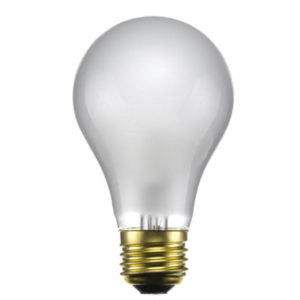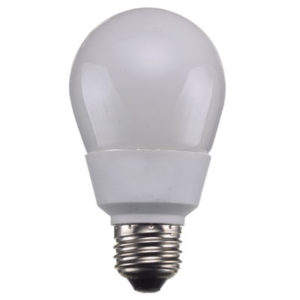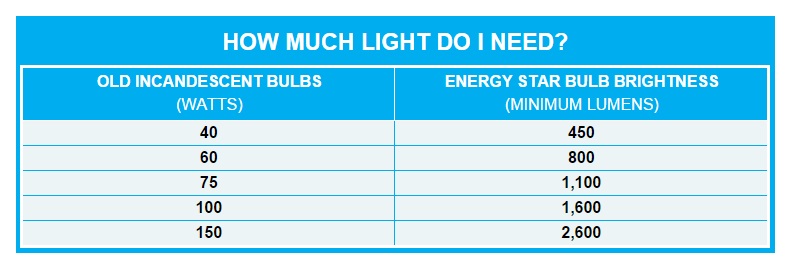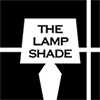Light bulb shopping can be SO confusing! There are so many different bulbs on the market today. How do I choose the best bulb for my home or office lamp?
BEFORE YOU SHOP
Before going to the store, it’s a good idea to consider where and how you will use each new bulb. Will you be using it for reading or working? Most people need bright light to read and to perform detailed tasks. Buy a bright white 100 or 150 watt incandescent or equivalent bulb. A bright white bulb will give you better reading and work light at the same wattage as a soft white bulb. Because of their intense heat, we do not recommend bulbs over 150 watts for most brass sockets. In our lamp repair, we see many lamps where 200 or 250 watt bulbs were used.
For general purpose lighting, use 40-60 watt equivalent bulbs in a Soft or Warm White color. Soft white bulbs provide a more pleasing light in most rooms. If there is more than one socket in your lamp or fixture, remember to multiply the wattage by the number of sockets. For example, 60 watts times 2 or 3 sockets will give you a great deal of light. Forty watts might be sufficient in this case.
Just need ambiance or a low night light for hallway, kitchen or bath? Try 25-watts or less, also in a soft white color. For this purpose, many of our customers like black lampshades lined with gold for a warm, soft glow.
BUYING OPTIONS
Incandescent Bulbs – Patented in 1878, this bulb has been the “gold standard” for over 100 years. But laws were passed in 2008 to phase out these less efficient bulbs. In 2012 these laws were no longer funded by Congress. By that time however, the industry had moved on. Many manufacturers had retooled production lines to make more energy efficient bulbs. We still sell incandescent bulbs that many customers prefer.

LED Bulbs – Light Emitting Diodes or LEDs are now the lighting industry standard. Most of them look like standard incandescent bulbs with a white “neck” at the bottom. They are available in standard and candelabra bases. Five to ten times more efficient than incandescent bulbs, they should last much longer and save electricity.

CFL Bulbs – The curly Compact Florescent Lightbulbs (CFLs) that have been on the market for several years are on their way out. Since they contain a small amount of mercury, they must be handled with care and disposed of properly. To save energy, opt for safer LED bulbs instead.

READ THE PACKAGE
Lighting Facts are required on new bulb packages. These facts indicate brightness, estimated energy costs, expected life, light color and energy used (wattage). Get to know these two new terms:
• Lumens tell you how bright the bulb—think luminous—and the more lumens the brighter the bulb. You’ll want around 800 lumens for light that’s as bright as a 60-watt incandescent bulb.

• Kelvins (K) indicate the color of the light. The lower the number, the warmer the color of the light emitted. For example, a 2700K bulb has a warm, soft white color, whereas a 5000K bulb has a cool, bright white color. Some designers tell me that they recommend 3000K bulbs to clients who need a brighter white that is not too harsh.
FEATURES YOU MAY WANT
Dimmable
Bulbs must be dimmable if you’re using dimmer switches or sockets. Incandescent bulbs are all dimmable. Many LED bulbs are not dimmable, and will flicker when dimmed. Look for the word DIMMABLE on the bulb package, and try it in your dimmer socket when you get home.
Works in Fully Enclosed Fixture
If LEDs can be used in fully enclosed fixtures, it should be noted on the package. This matters because if heat builds up inside the fixture it can change the bulb’s performance and shorten its life.
Works Outdoors
Most LEDs work outdoors but cannot get wet. They need to be protected from direct contact with rain or snow. Packaging should indicate indoor or outdoor usage.
Works Automatically
Bulbs and switches that automatically turn lights on and off must be compatible to work properly. This applies to motion sensors, timers and dusk-to-dawn photocell technology. Check the website of the manufacturer and read the bulb package to be sure.
FINALLY
There are many different brands on the market, and they differ slightly in brightness and color. Make sure you use the same bulb in a pair of matching lamps as well as fixtures with multiple sockets. It may also be more pleasing to use the same brand and color of bulb in the same room. If you are unhappy with a bulb purchase, feel free to return it and try again. Or use it where it will not be noticed, in the basement, garage or closet.
I hope this bulb shopping guide helps you find the right bulbs for your home or office. Feel free to reply, call or email us if you have any questions or comments.
